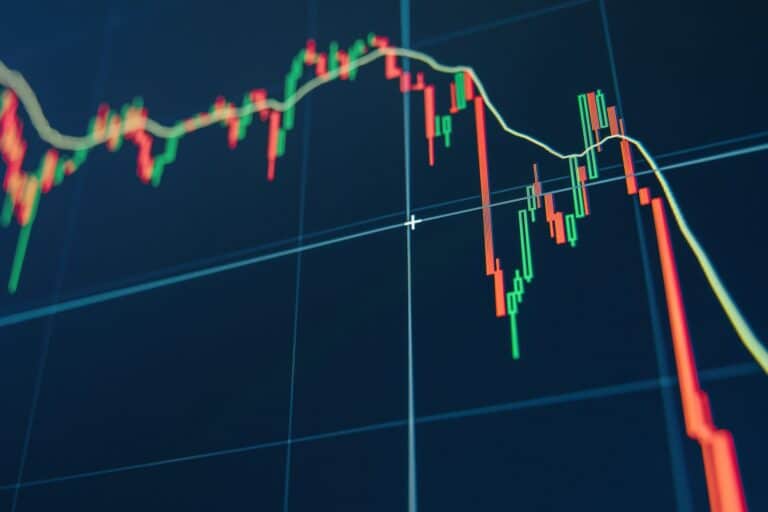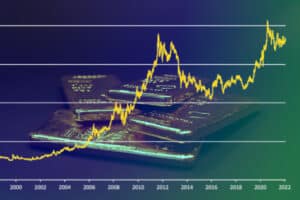As the BRICS bloc—comprising Brazil, Russia, India, China, and South Africa—continues to explore expansion, including European nations could significantly shift global financial dynamics. Such an expansion would solidify the bloc’s influence on international trade and economic policies. A direct impact of BRICS’ expansion into Europe could accelerate the de-dollarisation process, thereby reducing the dominance of the US dollar in global finance.
If European nations join BRICS, the initiative for greater use of local or a unified BRICS currency would gain momentum. This could lead to a substantial decline in the dollar’s hegemony, as more international transactions would likely be carried out in alternative currencies. Keep reading to learn more about how such shifts would not only impact the dollar’s valuation but also reshape the global financial architecture, influencing trade policies and economic strategies worldwide.
Historical Context and Evolution of BRICS
BRICS began as BRIC (Brazil, Russia, India, China) and later expanded to include South Africa, evolving into a significant multilateral group aimed at reshaping the world’s economic and political dynamics. This section traces BRICS’s origins and evolution, highlighting key events and milestones that define its growth and global influence.
From BRIC to BRICS: Inclusion of South Africa
Originally formed in the early 2000s, BRIC comprised Brazil, Russia, India, and China. These emerging economies sought to create a collaborative framework to enhance political and economic cooperation.
The first BRIC Summit in 2009 in Yekaterinburg, Russia, was a pivotal moment. At this summit, the member states emphasized their commitment to a multipolar world order.
In 2011, South Africa joined the group, changing the acronym to BRICS. Including South Africa brought the African continent into the fold, expanding the group’s geographical and economic diversity.
Previous Expansions and the Emergence of the BRICS Bloc
The BRICS bloc’s emergence can be traced back to initiatives in the United Nations General Assembly in 2006, where the initial ideas of cooperation were first discussed. The BRICS nations have regularly held summits since 2009, addressing global issues and economic strategies.
The establishment of the New Development Bank in 2014 marked another significant milestone. This bank aims to support infrastructure and sustainable development projects in BRICS and other emerging economies.
The BRICS Summits have consistently focused on enhancing intra-BRICS cooperation and reforming global financial institutions, thus promoting a stronger collective voice on the international stage.
Economic Impact of BRICS Expansion in Europe
The BRICS expansion into Europe has significant implications for trade dynamics, currency utilization, and economic strategies. Analyzing its effect on trade flows, the Euro, and the displacement of economic power provides insight into its overarching impact.
Trade Flows and Currency Utilization
Trade between BRICS nations and Europe is poised to increase, driven by the expansion. With countries like Saudi Arabia joining BRICS, energy and commodity trade could rise. Europe may see a higher volume of imports and exports, particularly in the sectors of energy and manufacturing.
The use of Euros and other currencies within the BRICS network can diversify away from the dollar, possibly reducing its dominance in global trade. Enhanced currency swap agreements may emerge, promoting the use of member countries’ currencies, thus impacting the international financial system.
Influence on European Union’s Economic Strategies
The BRICS expansion forces the European Union (EU) to reevaluate its economic policies and strategies. As the BRICS claim a larger share of the global GDP, Europe might face heightened competition. For instance, BRICS countries may offer alternative markets and investment opportunities, compelling the EU to strengthen intra-European trade agreements.
EU policies on energy security and trade may shift, prioritizing resilience. More collaborative policies could be pursued to stay competitive against the growing economic power of BRICS nations.
Shifts in Global GDP and Economic Power
The enlargement of BRICS is substantial, with the group’s share of global GDP rising. As BRICS encompasses 46.5% of the world population and a significant portion of the $100 trillion global GDP, it challenges current economic hierarchies. The inclusion of more developing nations into BRICS broadens its economic influence.
For Europe, this could mean recalibrating economic forecasts and financial strategies. The EU will need to adapt to the shifting landscape, focusing on technology, innovation, and other sectors where it maintains a competitive advantage. The redistribution of economic power emphasizes the importance of adaptive and forward-thinking policymaking.
Potential Challenges and Geopolitical Implications
The expansion of BRICS into Europe introduces significant geopolitical dynamics, such as the influence of Western sanctions and the strategic roles of key nations.
Western Sanctions and the Role of BRICS Nations
The integration of nations like Iran and Saudi Arabia into BRICS poses a challenge due to existing Western sanctions. These sanctions target countries like Russia and Iran, aiming to curb their geopolitical influence and economic activities.
Sanctions: Western sanctions can disrupt trade and investment among BRICS members. For instance, financial restrictions on Russia affect its ability to engage with global markets.
Geopolitics: Including countries under sanctions may increase geopolitical tensions, especially between the BRICS and Western nations. This growing polarization could impact global diplomatic relationships.
Economic Coordination: BRICS members like China and India must navigate these restrictions while maintaining intra-BRICS cooperation. Emerging markets within BRICS may face difficulties accessing international capital and technologies, which could slow down their economic growth.
Currency Dynamics and the Future of the U.S. Dollar
Recent developments in BRICS currency initiatives and their implications for the U.S. dollar have sparked widespread discussions. Key areas of analysis include BRICS’ push for a common currency, the dollar’s position as the world reserve currency, and central banks’ strategies.
BRICS Currency Initiatives and Local Currencies
Several BRICS nations are exploring the creation of a shared currency to reduce dependency on the U.S. dollar. Brazil’s call for such a currency underscores a desire for economic autonomy. The specific structure and acceptance of this currency remain uncertain, but it emphasizes a shift towards leveraging local currencies in intra-BRICS trade.
China and Russia have actively promoted the use of the yuan and ruble in bilateral trade. These efforts aim to circumvent the dollar, diminishing its dominance in global markets. Such moves could reshape trade dynamics, particularly if other BRICS members adopt similar practices.
Impact on the Dollar as the World’s Reserve Currency
Despite efforts from BRICS countries, the U.S. dollar remains the primary global reserve currency. A new BRICS currency poses a potential challenge but lacks the widespread acceptance and trust the dollar enjoys. The euro and special drawing rights (SDR) by the IMF are other alternatives, yet they haven’t displaced the dollar.
The dollar’s institutional support and liquidity advantages are crucial in maintaining its status. While notable, BRICS currency initiatives have not yet significantly altered the landscape. This underscores the complexities involved in shifting the global monetary order.
Central Banks’ Reserves and Currency Swap Agreements
Central banks globally maintain significant portions of their reserves in U.S. dollars. Any shifts towards a BRICS currency would require substantially rebuilding foreign exchange reserves. This involves evaluating the stability and reliability of the new currency compared to the historical stability of the dollar.
Currency swap agreements among BRICS nations, such as renminbi swap lines, are measures to facilitate trade and reduce dependence on the dollar. These agreements provide short-term liquidity but do not fundamentally change central banks’ reserve strategies. The ongoing adjustments reflect a nuanced approach to currency management in a multipolar economic environment.
Technological Advancements and Financial Innovations
Technological advancements and financial innovations are pivotal for the BRICS expansion to Europe. Topics include the introduction of BRICS cryptocurrencies and alternative financial systems.
BRICS and the Advent of Cryptocurrency
BRICS countries have also been considering developing their own gold-backed cryptocurrency. This initiative aims to reduce reliance on the US dollar for international transactions. Blockchain technology underpins these digital currencies, offering secure, transparent, and efficient transaction processing.
BRICS Pay, a unified payment system, could integrate these cryptocurrencies, facilitating seamless cross-border payments. With cryptocurrencies and blockchain, BRICS countries can create a decentralized financial ecosystem, reducing the need for traditional financial institutions and payment systems like Swift.
Emergence of Alternative Financial Systems
BRICS nations are exploring various alternative financial systems to enhance financial autonomy. Introducing Panda Bonds, bonds issued by non-Chinese issuers in China, fosters international investment options. These bonds offer financing in alternative currencies, reducing dependency on the US dollar.
The development of BRICS economic mechanisms facilitates commerce at a global scale. Institutions may see increasingly innovative strategies for payment systems beyond traditional banking methods. This includes adopting blockchain ledger systems to improve efficiency and transparency in financial transactions. Such advancements align with BRICS’ broader strategy to reshape the global financial market.
Protect Your Wealth Against Threats to the Dollar
If you’re concerned with external threats to the U.S. Dollar and are looking for new ways to protect your wealth, gold, silver, and other precious metals are always among the most popular diversification options.
With Noble Gold Investments, you can buy physical gold, silver, platinum, and other precious metals to store at home or in your own secure depository. We have a great selection of bars and coins that our knowledgeable team is available to discuss with you at any time.
We also give investors the option to buy gold and silver in a tax-advantaged precious metals IRA. Not only will you get all of the same tax advantages of a conventional IRA, but your physical precious metals will be stored in our secure depository.
Call Noble Gold Investments now at (877) 646-5347 to speak to one of our gold IRA specialists, or click here to open an account today







